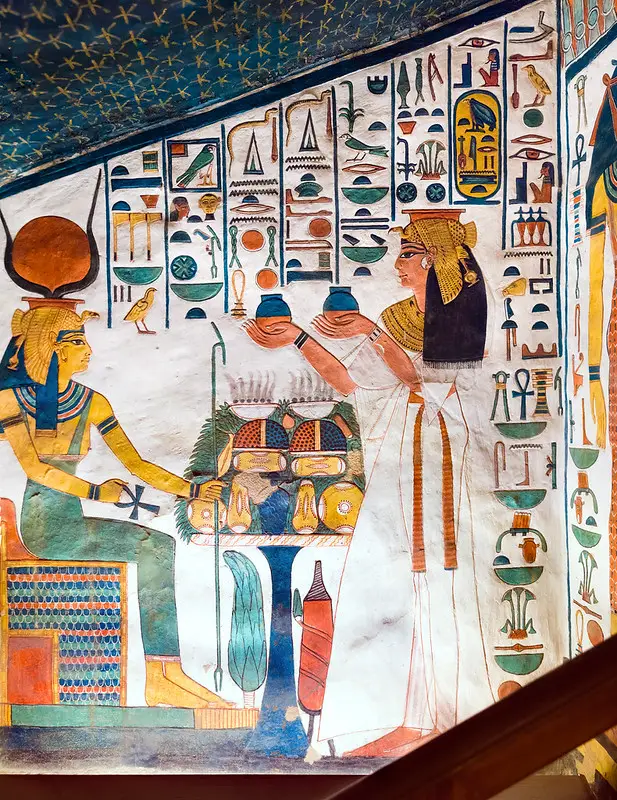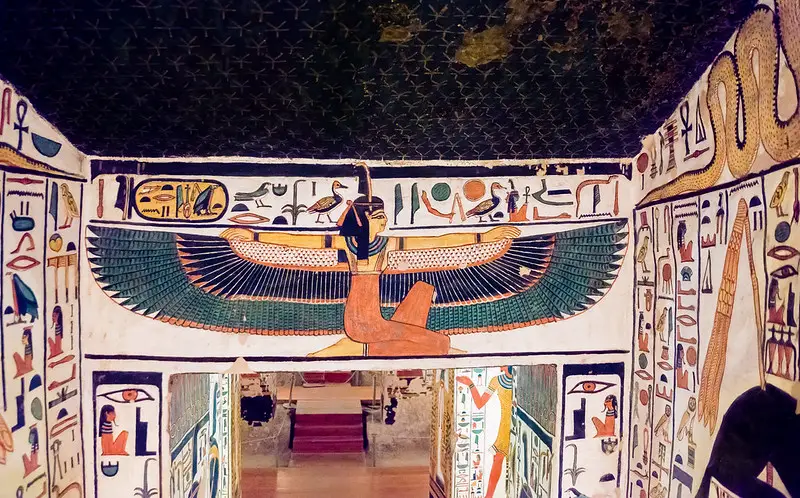
In the heart of ancient Egypt, during the illustrious 19th dynasty, a love story for the ages unfolded. This tale was not woven from the threads of politics or conquest but was penned in verse, etched in stone, and whispered through the corridors of time. At the center of this captivating narrative were two figures – Pharaoh Ramses II and his beloved wife Queen Nefertari. Join me on a journey as we explore the poetic masterpiece that immortalized their love: the Ramses II poem to Nefertari.
Table of Contents
Was Ramses II the Pharaoh of Love?
Imagine a time when kings and queens ruled over the banks of the Nile, where the grandeur of their reigns was matched only by the magnificence of their temples and tombs. Ramses II, often hailed as one of Egypt’s greatest pharaohs, was no stranger to the world of power and prestige. His reign, which spanned over six decades, witnessed military conquests, grand architectural projects like the Luxor Temple, and diplomatic endeavors that extended Egypt’s influence far beyond its borders.
Yet, amidst all the regal responsibilities that came with his crown, Ramses II was also a man deeply in love. His affection for Queen Nefertari, his Great Royal Wife, transcended the boundaries of time and status, and it was this love that found its expression in a remarkable love poem.
A Poem Carved in Stone
What sets this love poem apart is not just its sentiment but the medium through which it was conveyed. Carved into Nefertari’s tomb wall in Egypt’s Valley of the Queens, this ode to love became a part of the colossal site that served as a burial ground for the period (1292–1075 BCE) in the 19th dynasty and the 20th. Elaborately decorated with scenes from the Book of the Dead and vivid wall paintings of the Egyptian Queen’s journey to the afterlife, it is one of the most exquisite tombs in the Valley.

“My love is unique…”
The poem itself is a marvel of ancient Egyptian poetry, with Ramses II declaring,
My love is unique – no one can rival her, for she is the most beautiful woman alive. Just by passing, she has stolen away my heart.
Written by Ramses II for Nefertari
These words, immortalized in stone, reveal the depth of Ramses II’s love and admiration for Nefertari.
Let’s break down the significance of these poetic lines. King Ramses II, known for his military conquests and might, here shows a vulnerability and tenderness that is often overlooked in ancient Egyptian history. His proclamation of Nefertari’s uniqueness and beauty is a timeless testament to the power of love, even in the grand corridors of ancient palaces.
What Is the Story Behind the Abu Simbel Temple?
One of the most iconic symbols of his love and power stands in Luxor. The Abu Simbel temples, carved into the cliffs along the banks of the Nile, are a testament to Ramses II’s devotion to his beloved Queen Nefertari. The larger of the two temples is dedicated to Ramses himself, showcasing not only one colossal statue of the pharaoh but four, each standing at a towering 67 feet (20 meters) in height. The smaller temple, however, is dedicated to Nefertari, underscoring her significance in Ramses’ life. It’s adorned with statues of both Ramses and the Egyptian Queen, showcasing their eternal partnership.
The temples’ alignment is no accident either. The sun’s rays penetrate the inner sanctum twice a year, illuminating the statues of the gods and the pharaoh himself while leaving Ptah, the god of the underworld, in the shadows. This solar alignment was meticulously calculated, emphasizing King Ramses II’s connection to the divine.
Conclusion
As we gaze upon the Ramses II poem to Nefertari, found on the walls of her burial chamber, we are transported back in time to witness a love that transcended the ages. Ramses II’s words, etched into the rock, remind us that even the mightiest of kings were not immune to the power of love.
In the shadow of the great temple of Ramses II, we find a different kind of monument – a monument to love, devotion, and the enduring bond between a pharaoh and his queen. It is a testament to the fact that, in the grand tapestry of ancient history, it is often the smallest threads of human emotion that leave the most indelible marks.
So, the next time you ponder the wonders of ancient Egypt, remember the love story of Ramses II and Queen Nefertari. For in the depths of a mountain, in a love poem carved in stone, their love endures a beacon that guides us through the sands of time.